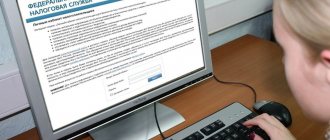Personal finance - concept and types
Personal finance is the sum total of all your monetary assets. In other words, this is all the money that you currently have: bank accounts, cash in your wallet, funds on a bank card, currency savings, etc.
Sometimes other assets, such as a home and car, are mistakenly included in personal finance. After all, you can sell them and also get money. But these objects are property, not finance. The difference between property and finance needs to be understood.
A personal financial plan is a procedure that allows you to receive the required amount (or income) by a certain date.
For example, you want to buy a car. First, you assess your current financial situation – savings and current income. Then, based on these parameters, you calculate how long it will take to implement your plan to achieve your goal.
Structure of the financial part of the business plan
To draw up a financial plan, it is customary to take a time period of 3-5 years. All documentation can be divided into three parts:
- forecasting expected goals and ways to achieve them;
- Business plan cost
cash flow design; - planning the balance sheet of the enterprise after implementing all the measures specified in the plan.
Forecasting financial goals includes a detailed description of the prospects for the development of activities solely from the point of view of the profit received. If the documentation involves a presentation to investors, the forecast should include an analysis of upcoming earnings for the first year and subsequent reference periods, as this will be a clear representation of the company's investment attractiveness.
Projecting cash flows is often different from the bank balance of turnover, as it uses different mechanisms for calculating income and costs. At its core, it is a short analysis of actual financial receipts and their transfer to the development of activities.
Balance sheet planning is not an analysis of balances over a limited period of time. It represents a description of the strengths and weaknesses (in terms of funds) at the time of drawing up the documentation. To determine these markers, you need to make a general calculation based on indicators such as the company’s own funds (internal capital), the tools that the company has, as well as obligations (ways and directions of waste).
Poll: How much do you earn per month?
Personal finance includes:
- All available cash is yours.
- Bank accounts (including savings accounts).
- Bank cards (excluding credit cards).
- Current level of income (money received during the month).
Algorithm for creating a personal financial plan:
- Formulate a goal (buy something or increase your level of income).
- Assess your current financial situation (savings and income level).
- Make a savings plan.
- Try to increase your income (part-time job, other job).
- Calculate the time frame for achieving the goal.
↑ contents ↑
Analysis of the current situation and recommendations for changing it
Financial advice to a client always begins with an analysis of his current financial condition. So, the financial condition of our clients is quite stable, although stability directly depends on receiving wages.
But the main thing is that the family has a positive balance between income and expenses, as well as between the value of assets and liabilities and, accordingly, a real opportunity to use it to increase financial well-being in the future.
It is also worth noting that Victor brings all the income to the family, so his wife and son are absolutely financially dependent on him. In this case, we recommend that you insure the life of the main breadwinner of the family against risks such as “loss of ability to work” and “death” in favor of dependents.
In general, the protection of a personal financial plan consists of three main points: pension savings; life and disability insurance and cash reserves. In this case, it is implemented partly in the form of health insurance at the place of work and the availability of a cash reserve (cash and bank accounts), which act as a financial buffer in case of unforeseen circumstances. But health insurance again depends entirely on the employer - it’s worth keeping this in mind when changing jobs. An insurance reserve in the amount of 6 monthly expenses should be placed in a deposit account so that it generates, albeit small, income.
Pension savings are a completely open question for the Ivanov family today. Victor and Olesya need to think about it now. Despite having a decent income and a positive balance of cash flows, Victor and Olesya today are not effectively using this difference to build their wealth and financial independence in the future. To close this issue, you can consider the English method of investing capital through an insurance company and forming a long-term investment portfolio.
If we look at the balance of assets and liabilities of the family, we will also see that the weighted average value of the family’s liabilities (loans in this case) is higher than the value of assets (current accounts, cash): 10.5% versus 1% per annum. That is, roughly speaking, the Ivanov family has a loss of 9.5% per annum. Of course, in absolute terms they do not notice it, since the amount of assets far exceeds the amount of liabilities, however, this return ratio cannot be called effective. Here the primary recommendations could be:
- early repayment of loans
- getting rid of the lowest-yielding assets
In this case, you can choose the last option, since the loan from Victor and Olesya is “inexpensive” and you only have 5 months left to pay. In addition, the investment strategy further developed for the family is aimed at obtaining comparable and even slightly higher returns in a more stable currency.
And finally, I suggest thinking about Ivan's education. Free higher education is becoming a thing of the past, so it is better to take care of solving this issue in advance. If the issue of education is resolved in a different way, in any case, starting capital for life will not hurt Ivan.
So let's see what happens.
Example of a personal financial plan
To create an effective plan, you must first clearly formulate the goal, and secondly, take into account monthly income and expenses. Let's consider the easiest example to understand : let's say you want to purchase a computer with a monitor for a total cost of 70 thousand rubles.
Based on the fact that your salary is 50,000 rubles, and monthly expenses are 45,000 rubles, you can save no more than 5,000 rubles per month. Divide 40 by 5 and get 8. In eight months you will be able to buy a computer.
Investment plan
In the table below, we will look directly at the investment strategy and its impact on achieving family goals.
Investment transactions in the table are reflected once a year based on the results of each year. However, in practice, you can invest in those months in which there is a positive difference between income and expenses. Numbers with negative values represent withdrawal of capital from the investment portfolio, positive numbers represent investment.
Capital accumulation plan, thousand rubles.
Using the example of 2013, let’s look at the actions of the Ivanov family according to this table:
- At the beginning of the year, the family had 2,304 thousand rubles of capital (column 2), accumulated in the current account at the beginning of planning;
- At the end of the year, Victor and Olesya accumulate an amount of 1,570 thousand rubles (column 3). The same amount can be seen in column 8 of the “Plan of current income and expenses” table. This money should not just lie there - it must be made so that it brings additional income to the family, that is, invested.
- The family distributes the accumulated funds each year into conservative, moderate and aggressive investments. In this case: – part of the capital in the amount of 450,000 rubles must be kept on a replenished-revocable deposit as an insurance reserve for 6 months; – it is better to allocate savings for Ivan’s education to another separate deposit with the possibility of replenishment, open it for the maximum possible period and put aside 22 thousand rubles per month for it to accumulate 1,500 thousand rubles. after 5 years at a rate of 8% per annum. – the calculations use investment returns from 4 to 15% per annum, with the average annual rate ranging from 5.7 to 9.2% depending on the year. (Depends on the presence of large withdrawals from the portfolio when achieving goals, as well as adjustments to the strategy itself - with increasing age we gradually reduce the risk.)
- After completing all of the above transactions, by the end of the year the capital of the Ivanov family may amount to 4,006 thousand rubles (column 10). Of this, about 450 thousand rubles are used as an insurance reserve on a replenishable-revocable deposit, another about 270 thousand rubles. on a dedicated replenishable deposit for Ivan, the rest are invested with different levels of risk in a balanced portfolio of investments.
Then, every year, the Ivanov family needs to perform the actions indicated in the table. It must be borne in mind that the actual amounts will certainly differ.
Victor will retire in 2029. Thus, income in the form of wages ceases from 2029, and the family begins to live on a percentage of the accumulated capital. We see this in the “Plan of current income and expenses” table in the 2029 line, as a lack of income from current activities. We also see in the “Capital Accumulation Plan” table in the 2029 line as the withdrawal of capital for life from investment instruments.
It is also worth noting that in 2027, a couple of years before retirement, it is necessary to adjust the investment strategy to a more conservative one, since Olesya and Victor can no longer afford to risk their capital as before - now he is their “breadwinner”. You can see in the “Capital Accumulation Plan” table in the 2027 row this adjustment: withdrawal of capital from aggressive and moderate investments in favor of conservative ones. From this moment on, the capital will bring less income than before - about 5% per annum, but it will be more reliable.
The interest on capital, even with such a conservative placement, is received by the Ivanov family just sufficient to maintain the previous level of living expenses: when placing accumulated capital in the amount of 24,103 thousand rubles at the end of 2028 at 5% per annum, they can count on 100 thousand rubles passive income per month. Despite the fact that their current expenses before retirement were 74 thousand rubles per month. Therefore, they can afford, including annual travel, gym classes and payment of life insurance in favor of Ivan, if they want.
This is what investments will look like at the end of 2013 if we act according to plan:
It is worth noting that the head of the Ivanov family, Victor, wanted to take on a fairly high risk: 60% of the portfolio of aggressive investments, but in the course of work we still decided to reduce their share to 20%.
At the same time, 45% of conservative investments were planned in the portfolio and, accordingly, 35% of moderate investments.
So, let’s summarize the developed plan:
The Personal Financial Plan (PFP), drawn up taking into account the needs and wishes of the Ivanov family, showed the compliance of the stated financial goals with their current capabilities. All goals are achievable within the specified time frame. All that remains is to implement the recommendations in practice.
You can order the service of developing your Personal Financial Plan from a financial consultant.
Planning expenses and income in the program
The accuracy of your personal financial plan depends on taking into account the expenses that will accompany you on the path to achieving your goal. Having accurate numbers, it is easier to calculate the time frame for achieving goals. To create a personal budget, we recommend using special tools, for example, the Housekeeper program (works under Windows).
You can download the program from this link >>
The peculiarity of the program is that you can plan your expenses and income completely free of charge (this section is available without payment). The program also makes it convenient to keep a shopping list and track your income.
Let's briefly look at the planning principles in this program. First you need to go to the “Plans” section. There are two areas here - a plan of expenses and income for the specified month (see screenshot). First, we create a list of categories for the current month. To do this, click the “Add” button, in the new line click the down arrow (drop-down list) and select the desired category. You can do it easier - click the “Fill in all” button and all the categories that are in the program will be automatically added to the table. All you have to do is delete unnecessary entries.
We fill out the income section in the same way. The screenshot shows that car expenses (RUB 7,000) exceeded the limit by RUB 1,000. This is also noticeable for the “Clothing” category (exceeding the limit by 2000 rubles). The point of the table is to create a monthly spending structure, and then try to stay within this plan.
We can edit two parameters – category and flow level. The third column “Expense (actual)” is generated automatically based on actual expenses that are added in the “Expenses” section.
To make the picture of your personal finances as accurate as possible, you need to systematically add your transactions to the program. This tool is more convenient than an Excel spreadsheet because it requires minimal user action.
Full overview of the Housekeeper program >>
↑ contents ↑
Where to keep records?
Is accounting necessary at all? Or can you just save money and not think about anything? In principle, this option is also possible. If you have an iron will, determination, excellent memory and your goals are not too long-term. But why all this? It’s easier to keep records, recording your achievements and the stage at which you are now and how much time you still have left until the end of the journey (time and money).
There are several accounting options. You can keep a notebook, a kind of income and expense book, and make notes there. The second option is to record everything on your computer in an office program, such as Excel. Once you have set up and entered the necessary items of expenses and income, as well as your goals, all you have to do is enter the numbers in the appropriate columns. You can even create a financial plan in a ready-made Excel spreadsheet and modify it a little to suit yourself.
But I think this is a long-outdated option. We live in the era of computer technology and a fairly large number of programs have already been created that significantly simplify the maintenance of such accounting and, in particular, the achievement of a personal financial plan. The only negative is the likelihood that such a service will be closed by the developer. Your Excel tables will not go away, but data on a third-party service may be lost forever.
Therefore, here you need to choose the right service that has been working for several years. Personally, I have been using the free EasyFinance.ru program for several years.
There are a lot of advantages. Simpler accounting, the ability to easily access your data in the past, with the preparation of various reports: how much you received previously, how much you spent, saved, what share of a particular item of expenses-income from the total, what stage of the financial plan you are at and how much you left. You can maintain several plans at once. All this can be done with just one click of the mouse. And what I especially like is the ability to build all kinds of graphs, charts and interesting reports. This would be difficult to achieve in Excel.
Poll: How much per month can you save?
Budget savings begin with cost analysis. First you need to find the most expensive directions. For example, the largest expenses are observed in the “Food” section. It is necessary to analyze the structure of this section (costs per month):
- Lunch at work – 7,000 rubles.
- Restaurants and bars – 12,000 rubles.
- Food products – 11,000 rubles.
- Sweets – 5,000 rub.
- Total per month: 35,000 rub.
How to reduce your lunch costs? You can take food with you. In this case, it is easy to cut costs twice. For example, the maximum cost of a home-made lunch (soup or porridge with meat + bread and sweets) is approximately 150 rubles. We multiply this amount by 22 working days and get 3300 instead of 7000 for lunches in a cafe. Homemade food not only saves a significant amount of personal finances, but also has a positive effect on health.
Poll: How many sources of income do you have?
In the digital era, getting a new profession is not a problem. There are many training courses available on the Internet that will allow you to gain additional specialization. For example, you can study to become a designer, internet marketer, copywriter or programmer. The new specialty will help you find additional income via the Internet and work as a freelancer (without constantly visiting the customer’s office).
Finding a new, higher paying job is also not a problem. If you are confident in your abilities and consider yourself a professional, then you can safely send your resume to large companies. If you doubt your competence, it is better to undergo additional training and expand your professionalism. True professionals are always paid well.
There is no need to rush to start your own business. It is necessary to calculate all risks in advance and draw up a clear financial plan. If your future business is related to current hired work, then you can try to identify and head a separate direction in your enterprise, and then scale up (create your own separate company). This way you will share risks with your employer, gain experience and be aware of all the features of this business.
The considered methods of optimizing income and expenses allow you to change the algorithm. A personal plan makes you look at life from a different perspective and begin to act in your own interests.
↑ contents ↑
How LFP allows you to plan personal finances
As a person grows older, he realizes that he has important financial tasks ahead of him in life. For example, they might look like this:
what does physical therapy management include?
And since solving these problems requires large funds, a person comes to the need for personal financial planning.
Why is it needed?
In order to accumulate enough funds to solve each problem on time. Why can't we do without a plan?
Because in the bustle of everyday life we don’t have time to think about distant, large tasks. We can perform some very simple, easy actions.
And the task of financial planning is to break down distant, large-scale tasks into simple, elementary steps. Which would be easy to do in normal life. And which will ultimately lead a person to achieve the desired goals.
What value does such a plan bring to you?
2.1 Checks the achievability of the goal
When setting off to a distant goal, you first need to understand whether it is even possible to achieve the desired goal this way?
On the one hand, we have limited resources: time to save and cash flow for investment. On the other hand, there are large-scale goals that you want to achieve.
An accurate mathematical calculation within the FP will show whether the goals are achievable with the allocated resources.
Unfortunately, in practice it often happens that this is not the case. People allocate little money and time to create capital. But at the same time they want to achieve very large goals.
Calculations allow you to quickly understand how realistic your expectations for the future are.
2.2 Suggest changes that will make the goals achievable
Since people’s expectations regarding their financial future are often too high, adjustments are needed that, given the allocated resources, will still allow them to achieve their financial goals.
What changes are possible? There are two strategies - either reduce the goal or increase resources. Or use both approaches.
Let's say a client and I are discussing personal retirement planning. And calculations show that the planned capital will not provide a person with the desired rent by the required date.
What can be done?
You can invest more or increase the savings period. Perhaps it is worth reducing the desired amount of pension annuity.
By changing these parameters, we will calculate additional plan options. Which we will then discuss with my client. A thoughtful analysis of various financial plan options will help us choose the optimal solution for the client.
For example, the solution could be as follows. A person increases his cash flow for investing by 10% monthly, and ends his career 3 years later. And then he will be able to provide himself with the desired rent.
This is why such calculations are needed. When planning our future, we must understand what it will be like under certain assumptions. It is these scenarios that LFP calculates.
For example, will I have time to create funds for my children’s higher education if I take out a mortgage now? And how much later will I have to retire in this case? What if I, having saved up more than half the cost of the apartment, take out a mortgage in two years? Then the interest rate will be lower - how will this affect my financial future?
The plan calculates similar scenarios for subsequent analysis. In order to ultimately choose the optimal solution for a person.
2.3 Will give a step-by-step algorithm of actions
Families have long-term, large financial goals - and certain funds that they are willing to allocate monthly to achieve these goals. How to link current cash flow with the achievement of distant goals?
Obviously, a clear algorithm of actions is needed. This is the family's financial plan. By performing the simplest actions given in it, you will steadily move towards your goals. While going about your current life.
Investing Personal Finance
The implementation of a financial plan implies constant accumulation of funds. Your savings should not lie dead weight, because in conditions of financial instability, savings depreciate naturally - due to inflation.
It is better to divide large sums of money into parts and invest in different financial instruments. The simplest and most reliable way is to divide available funds into three equal shares and distribute them as follows:
- Investment in US dollars.
- Investment in Euro.
- Savings account in a bank.
Currency investments can also be arranged in the form of a bank account, to which interest will be accrued. This way you will save money from inflation and be able to implement your financial plan on time.
Riskier investments of free money are the following instruments:
- Stock market.
- Mutual investment funds (UIFs).
- Game on the Forex exchange.
By buying shares of the largest players in the energy sector (“blue chips”), you can ensure an annual return of -10% to +20%. Mutual funds will allow you to earn more - up to 30% per annum. But the risks are many times higher than investing in blue chips. The Forex currency exchange is generally an unpredictable tool that can only be used by professionals.
The optimal investment of personal finances would be the following scheme:
- 25% – US dollars.
- 25% – Euro.
- 35% – savings account in a bank.
- 15% – blue chips.
Another relatively safe investment method is buying gold. Statistics show that the price of gold has been growing steadily in recent years. There is no point in buying gold bars directly. For this type of investment there is a special tool - an impersonal metal account (UMA).
Compulsory medical insurance is a type of bank account that is backed by gold (or other precious metals). Transactions for the purchase and sale of metals can be carried out through the bank’s personal account. The process of buying gold is similar to purchasing currency on the stock exchange.
The advantages of investing through compulsory medical insurance include the following:
- Gold and silver have low volatility over long periods of time.
- High liquidity is achieved through the rapid crediting or debiting of metal from the account.
- Security of transactions - all transactions are carried out within the banking system.
- There is no need to create a special storage facility for metals.
↑ contents ↑
Taking risks into account in the financial plan of a business plan
Risks are quite commonplace in business, and they must be calculated and foreseen, since they cannot be eliminated.
There are three groups of risks in the business plan:
- Commercial.
- Financial.
- Production.
Commercial risks can be the result of relationships with investors, business partners, and also due to the external environment. As for external factors, they are:
- A sharp surge in competition in the market.
- Decrease in demand for products/services.
- Problems on the part of suppliers of raw materials, materials, which led to downtime in production, production of low-quality products and, as a consequence, losses.
- Instability of prices for a product or service, this also includes seasonality.
- Other force majeure circumstances that cannot be controlled and have a negative impact on production.
Financial risks are unexpected items of expenses or, conversely, but which is extremely rare, income. These risks include the following:
- Currency instability.
- Changes in legislation, which will lead to an increased tax rate, changes in the taxation system, which will subsequently be unprofitable for the enterprise.
- Accounts receivable, late payment.
- Lenders increase interest rates.
Of course, this is not a complete list of possible factors; we have listed the most popular ones here.
As for production risks, this includes changes in the operation of the enterprise due to unforeseen circumstances. The most common production risks include the following:
- Omission of such a stage of production as product quality control, which will inevitably lead to defects not only of units, but also of entire batches.
- Incompetence of employees, especially if they are a specialist at an important technological stage or in a leadership position.
- Protests, strikes, deliberate damage to the property of the enterprise, which leads to a disruption in production.
- Release of low-quality products.
Such risks can be completely prevented or at least minimized the likelihood of their occurrence. Current instruments include insurance, the creation of a reserve for unforeseen financial expenses, production control, and careful selection of personnel.
Common planning mistakes
Fuzzy goal setting. The plan for achieving a financial goal should be as clearly formulated as possible. For example, if you plan to purchase a car, then the goal is formulated as follows: a car of a certain brand, in such and such a configuration, at a specific price. Everything should be as specific as possible. After this, we formulate a plan to achieve the goal:
- We have a goal expressed in digital form.
- We analyze our current budget.
- We optimize income and expenses.
- We divide the cost of the object by the amount of monthly savings and get the number of months in which the goal will be achieved.
A typical planning mistake is underestimating monthly expenses and overestimating income. You need to accurately calculate your expenses, which is why we recommend using special financial tools - programs or Excel spreadsheets. If there is no clear picture of expenses, then when drawing up a plan you will have to allow for a large error.
What are the benefits of personal financial planning?
Decomposition of distant, large financial goals into a sequence of simple financial transactions that are carried out on autopilot month after month is the most important advantage that long-term financial planning gives a person.
Download the PDF review “Personal Financial Planning” to invest wisely and create personal capital:
How does this help achieve critical goals?
4.1 Do you have a plan to achieve your goal?
To eat an elephant, you need to cut it into steaks. This is what a financial plan does - turning your major financial tasks into a chain of simple financial steps. Which, when completed, lead a person to achieve the goal.
For example, you set a goal to create capital by the age of 60 that will provide an annuity of 5,000 USD monthly with a risk-free rate of return. What do you need to do to solve the problem?
Financial planning will calculate the amount of capital you need by your sixtieth birthday. Next, taking into account your attitude to risk, the structure of the investment portfolio will be formed. The portfolio structure will determine the realistic rate of return that the portfolio will provide during the accumulation period.
The rate of return and the period of savings will determine the amount you need to invest monthly to create the required capital. After this, an investment plan will be opened, the provider of which will debit the calculated contribution from your plastic card monthly. And distribute this amount in the required proportions among the assets selected for the portfolio.
So here are the steps to achieving your financial goal:
- We define the goal. Thus, we fix the period of savings and the amount of required capital;
- We find out your attitude to risk. Thus, we determine the portfolio structure and rate of return;
- Knowing the rate of return, we calculate the amount that needs to be invested monthly;
- We open an investment plan with the required monthly contribution.
As a result, your global task of “creating retirement capital” is broken down into a number of elementary financial steps.
There is only one step you need to take each month - and that is to deposit the monthly contribution amount into the savings plan onto your card. The amount will be written off by the service provider and automatically invested in the global financial markets in the assets you have chosen.
4.2 Are you confident that your goals are achievable?
A personal financial plan proves that important goals are achievable at the right time. This is directly shown by mathematical calculations made during the planning process.
Thus, you find for yourself that very balance between “now” and “later”. Day after day you live a full life, and calmly spend all the money left after your monthly investment. Knowing at the same time that your most important long-term financial tasks are solved automatically. And they are guaranteed to be resolved in due time.
Video on personal financial planning
The video contains information about the principles of personal finance management. The author notes that the most important point is setting financial goals, and everything else (income, expenses, investments) is secondary. First you need to make a list of goals, and then indicate the approximate time frame for achieving each of them. This list should serve as an incentive for further action. The second action is the search for means to achieve what you want. The author of the video insists that setting financial goals is primary, and finding funds for their implementation is a secondary task.
The next video talks about how to create a personal financial plan. The author focuses on financial control. The stages of financial planning are discussed here. First, an assessment of your current state is made - how much you earn and spend. The author suggests monitoring your expenses on a daily basis - how much money you spent per day and on what. This is how your expenses are analyzed and further optimized.
↑ contents ↑
Objectives of physical therapy
Financial plan solves several very important problems. And one can only be surprised that many Russians do not plan their financial future.
3.1 Clearly define goals
If you intend to make a plan, you first need to understand what goals you intend to achieve. Since the article is about financial planning, we need to determine our long-term financial goals.
And if we do this, clarity will appear. A vector, a direction of movement, a desire to achieve a goal will appear. All that remains is to plan its achievement and move forward step by step.
Most people have no idea what financial goals they want to achieve. Often they spend everything they earn without planning beyond the current month.
This is how decades flash by. And suddenly, suddenly, they feel like very mature people. Life has passed, many problems have not been solved, there are no savings.
Is this not your script? Then plan your future.
3.2 Find a balance between present and future
Achieving a major financial goal requires saving. Savings are created by saving and then investing part of current income.
And here two extremes are possible. The first is that a person intends to live only for today, enjoying the “here and now”, saving nothing for the future.
Life is short, enjoy today! This person does not solve his long-term financial problems. And he will inevitably face serious financial problems in the future.
The second extreme is when a person lives very frugally today, denying himself literally everything today for the sake of a wonderful “tomorrow.” Perhaps he will accumulate a chest of gold - over which he will languish in old age.
But he will lose the joy and beauty of life, and in fact, life itself. No wealth is worth this price.
How to find a balance between a full “today” and a secure “tomorrow”? The answer is simple - through financial planning.
Accurate calculations based on given goals and the time frame for achieving them will show how much money you need to save monthly in order to achieve important goals in the future. The family can easily spend everything else for a full life today. Knowing at the same time that the most important tasks will be resolved in a timely manner.
3.3 Ensure financial stability
Many, I’m not even afraid to say, the absolute majority of families in Russia, regardless of the size of their income, are in a very vulnerable financial situation. Because they do not know about the basic elements of financial stability, and have never analyzed their financial situation from this point of view. In addition, most families in Russia have assets distributed irrationally.
The initial stage of personal financial planning is an analysis of the family's current financial situation and assets. And most of the problems that emerge at this stage can be grouped into three categories.
3.3.1 Financial instability
There are three critical elements to financial stability—and unfortunately, many families lack them. Play my video about what will provide your family with financial stability:
First, you need to have a liquid cash reserve. This is an emergency supply of money in case the family temporarily loses its income, or suddenly needs to pay for unexpected expenses. A sharp drop in business profits, sudden dismissal, or a prolonged illness are examples of such events.
Second, the family needs life insurance for the breadwinner in case he passes away. In this critical situation, the policy payout will replace the lost income of the breadwinner. This will allow the family to survive with money to achieve their most important goals.
Finally, the family needs a regular savings program and an effective investment plan. Then the family will be able to create the capital that will help it achieve its financial goals.
So, for financial stability, a family needs:
- liquid reserve;
- breadwinner's life insurance;
- investment plan for creating capital.
3.3.2 Low liquidity
Even if a family has serious assets, it often happens that these assets are not liquid. When problems arise, they cannot be quickly turned into cash.
For example, all funds are invested in a business, or in rental real estate. Then the family will have nothing to pay for urgent expenses. And this is fraught with large losses.
Also, without liquidity, the family will not be able to take advantage of profitable opportunities that suddenly appear on the market. There will be no money to purchase a profitable business, or real estate at an attractive price, if such an opportunity suddenly arises.
Both scenarios negatively impact the family's financial future. And therefore it is necessary to maintain liquidity at the proper level.
3.3.3 Incorrect asset allocation
For decades, Russians have lived in conditions of instability and high inflation. And therefore, the savings of many families are represented by money in bank accounts and real estate. Families no longer have any investments.
Very few people are familiar with investment portfolio theory. With long-term savings, most of the investment portfolio should be represented by equity assets (business shares), i.e. shares.
At the same time, you need to invest not in individual companies, but in broad classes of assets to reduce the risk of individual issuers. An asset class, for example, is the SP500 broad market index.
In addition, the investment portfolio must be geographically diversified. This means that your funds must work in the economies of different countries. Today's financial market offers effective tools that allow families to invest in global financial markets, including without the risk of loss.
Most Russian families have irrational distribution of assets. Most often, 100% of invested funds are allocated conservatively. This means that families are not receiving a significant return on their savings. To increase profitability, you need to transform the portfolio structure.
In addition, all assets are located in one country, Russia. This dramatically increases the risk of such a portfolio. To reduce the risk, you need to place part of your assets abroad.
At the very beginning, a financial advisor will analyze your investment portfolio and suggest the necessary adjustments in terms of:
- liquidity;
- asset structures;
- geographical distribution of funds.











